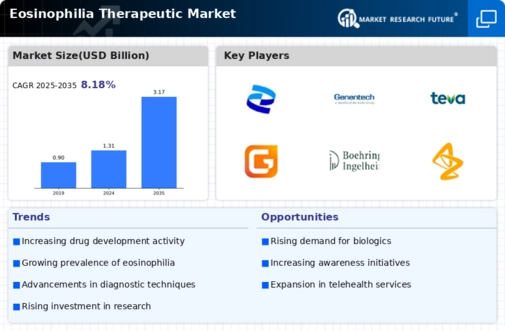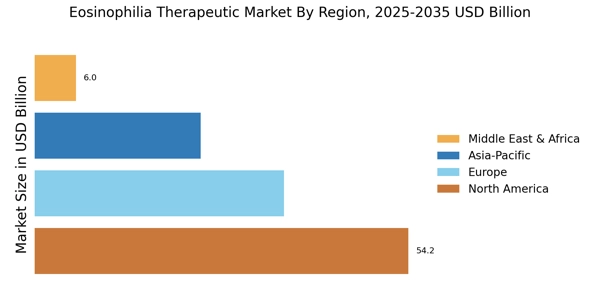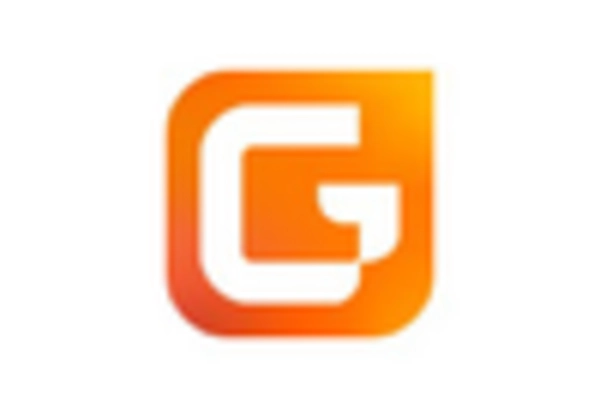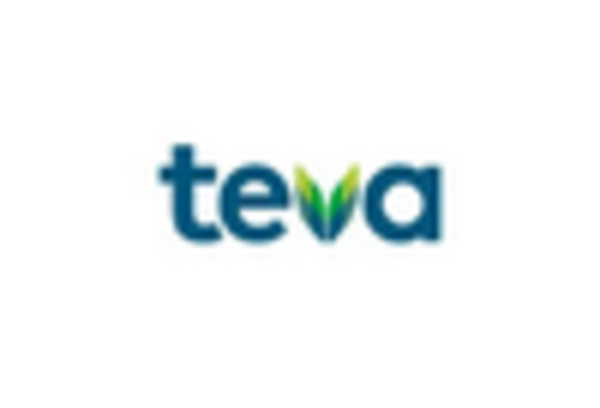Emergence of Targeted Therapies
The Eosinophilia Therapeutic Market is witnessing a surge in the development of targeted therapies aimed at eosinophilic disorders. These therapies, which include monoclonal antibodies and small molecule inhibitors, are designed to specifically address the underlying mechanisms of eosinophilia. Recent data indicates that the market for eosinophilia treatments is projected to reach USD 2 billion by 2027, driven by the increasing approval of novel therapeutics. The introduction of these targeted treatments not only enhances patient outcomes but also expands the therapeutic options available to healthcare providers, thereby stimulating further growth in the Eosinophilia Therapeutic Market.
Advancements in Diagnostic Techniques
The Eosinophilia Therapeutic Market is experiencing a notable transformation due to advancements in diagnostic techniques. Enhanced methods such as next-generation sequencing and advanced imaging technologies are facilitating earlier and more accurate diagnosis of eosinophilia. This is crucial, as timely identification of the condition can lead to more effective treatment strategies. The increasing prevalence of eosinophilia, with estimates suggesting that it affects approximately 1 in 1,000 individuals, underscores the need for improved diagnostic capabilities. As healthcare providers become more adept at recognizing eosinophilia, the demand for targeted therapies is likely to rise, thereby propelling growth within the Eosinophilia Therapeutic Market.
Growing Incidence of Allergic Disorders
The rising incidence of allergic disorders is significantly influencing the Eosinophilia Therapeutic Market. Conditions such as asthma, allergic rhinitis, and atopic dermatitis are closely linked to eosinophilia, and their increasing prevalence is driving demand for effective therapeutic interventions. Reports suggest that allergic diseases affect over 30% of the population in various regions, leading to a heightened focus on eosinophilic conditions. As healthcare systems prioritize the management of these disorders, the Eosinophilia Therapeutic Market is likely to benefit from increased investment in research and development, ultimately resulting in a broader array of treatment options for patients.
Increased Patient Awareness and Education
Increased patient awareness and education regarding eosinophilia are playing a pivotal role in shaping the Eosinophilia Therapeutic Market. As patients become more informed about the symptoms and implications of eosinophilia, they are more likely to seek medical advice and treatment. Educational campaigns and advocacy efforts are contributing to a greater understanding of eosinophilic disorders, which in turn drives demand for effective therapies. The rise in patient engagement is expected to lead to higher diagnosis rates and treatment adherence, ultimately benefiting the Eosinophilia Therapeutic Market as more individuals seek appropriate therapeutic interventions.
Regulatory Support for Innovative Treatments
Regulatory bodies are increasingly providing support for the development of innovative treatments within the Eosinophilia Therapeutic Market. Initiatives aimed at expediting the approval process for new therapies, particularly those addressing unmet medical needs, are becoming more prevalent. This regulatory environment encourages pharmaceutical companies to invest in research and development, fostering innovation in eosinophilia treatments. The potential for faster market entry of novel therapies not only enhances competition but also improves patient access to cutting-edge treatments. As a result, the Eosinophilia Therapeutic Market is poised for growth, driven by a robust pipeline of new therapeutic options.


















Leave a Comment